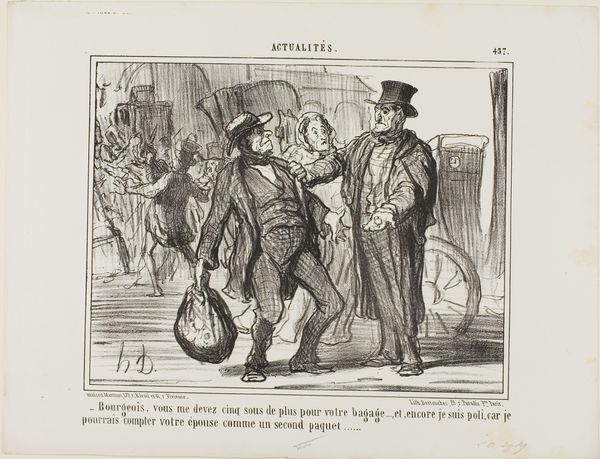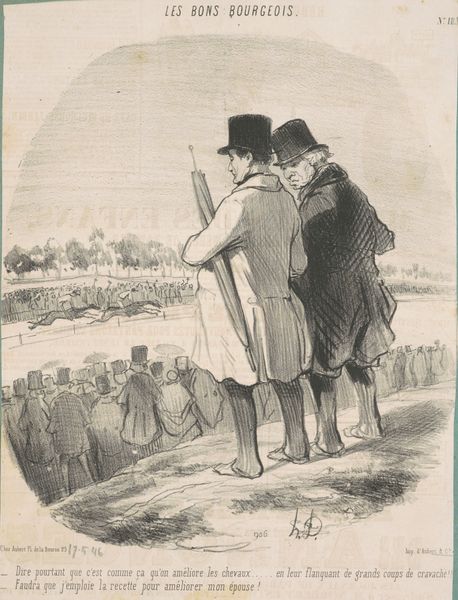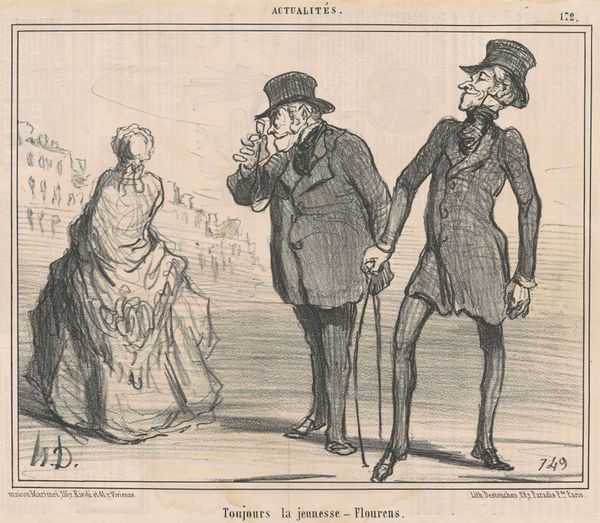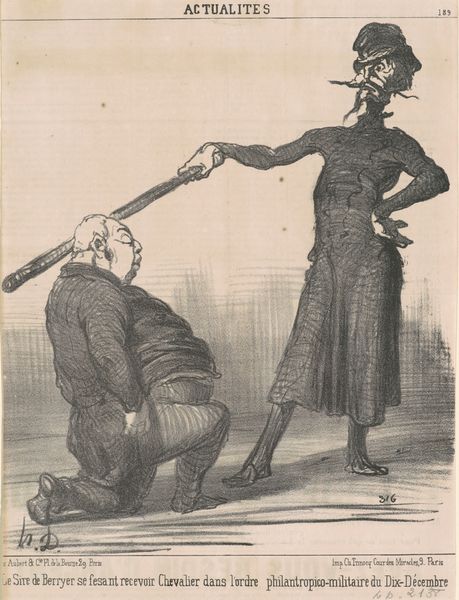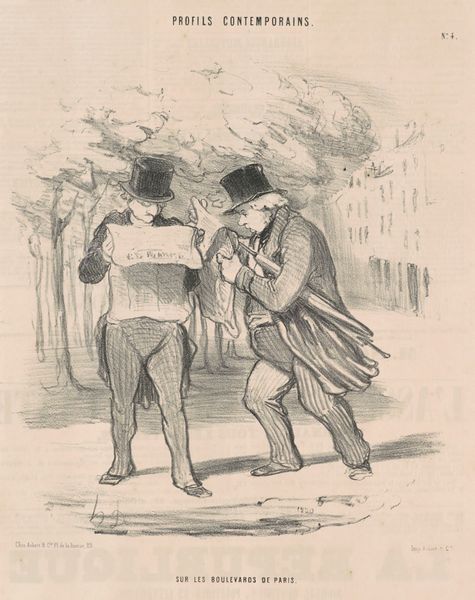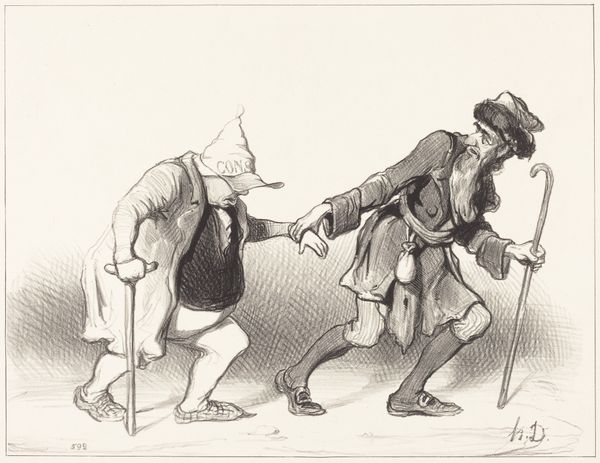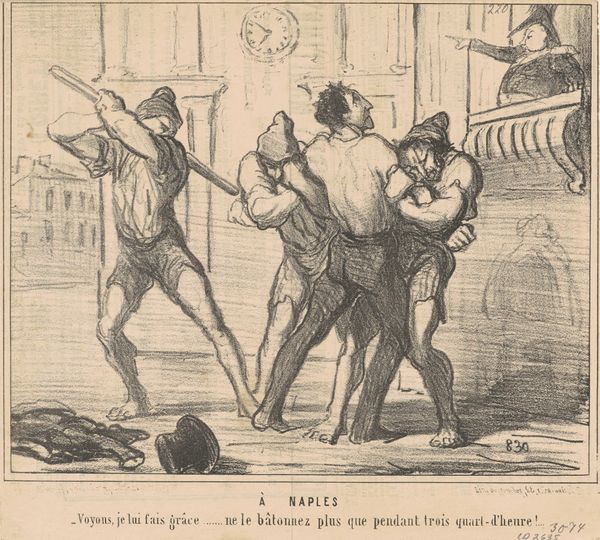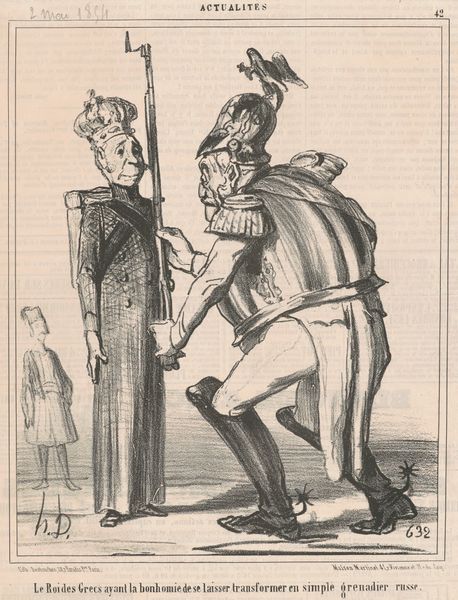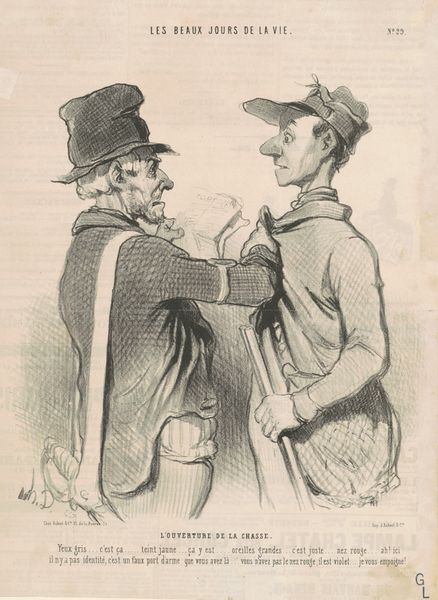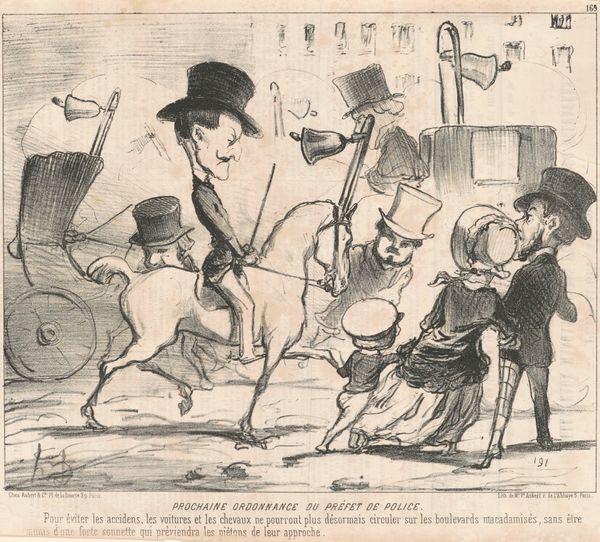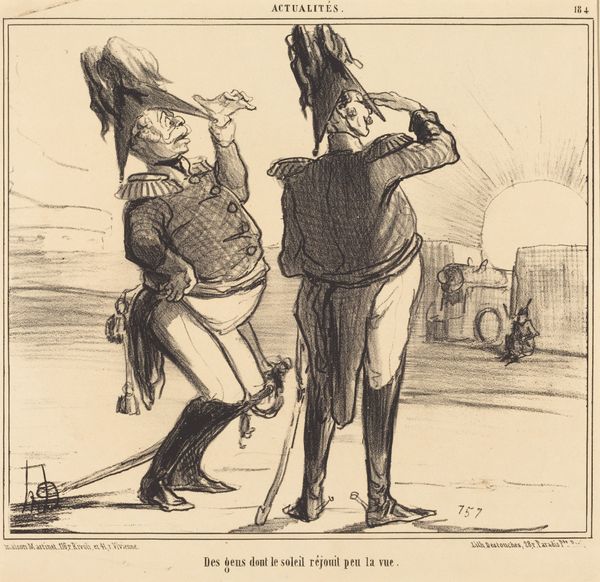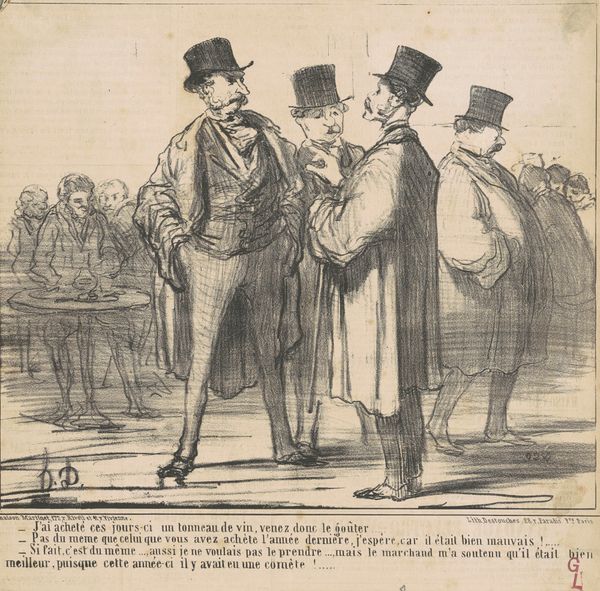
Copyright: National Gallery of Art: CC0 1.0
Curator: This lithograph, "La Levée en masse en Russie..." created in 1855 by Honoré Daumier, presents a fascinating perspective on 19th-century European conflict. The technique employed is quite interesting as a social commentary and visual artifact reflecting mid-19th century lithographic practices. Editor: Oh my! The two central figures immediately strike a chord with me. The absurdity of these characters and the stark pen work—it all has a certain charm, almost darkly humorous. Curator: Indeed, Daumier’s caricature leans heavily into social commentary. The lithograph would have been printed in multiples; examining how Daumier used materials, like the lithographic stone and pen, offers insight into the democratization of art production. Consider how printmaking facilitated wider access to artistic expression beyond traditional elite patrons. Editor: Precisely! It almost feels rebellious, right? Seeing that dense crowd in the background, all those pointed bayonets... There's a feeling of impending doom and, simultaneously, mockery, you know? It's like the artist is saying "War? What a joke." The lines themselves, scratchy and frenetic, they speak to that instability. I'm picking up what he is laying down, feeling his angst about it all. Curator: It speaks to how Romanticism allowed a deeper understanding of themes of war and conflict, presented by a rising art market, and an industrialized production of images consumed and considered widely. Editor: Right! The way he plays with scale, exaggerating certain features – it almost undermines the whole military pomp and circumstance. The visual weight is striking too— the looming figures against the indistinct background... like giants striding toward some inevitable but foolish fate. There's a palpable tension and theatrical quality. Curator: Certainly, seeing how lithography becomes integrated into social and political discourse underscores art's role within the historical contexts. Reflecting on the materials and social contexts through which these works emerge enhances our ability to analyze broader patterns in history. Editor: I agree. I mean, on the surface, it might appear as a simple humorous drawing, but knowing the historical conditions brings new insights and layers of significance and interpretation to the entire visual rhetoric being offered. I definitely get that after having explored this a bit further together with you.
Comments
No comments
Be the first to comment and join the conversation on the ultimate creative platform.
